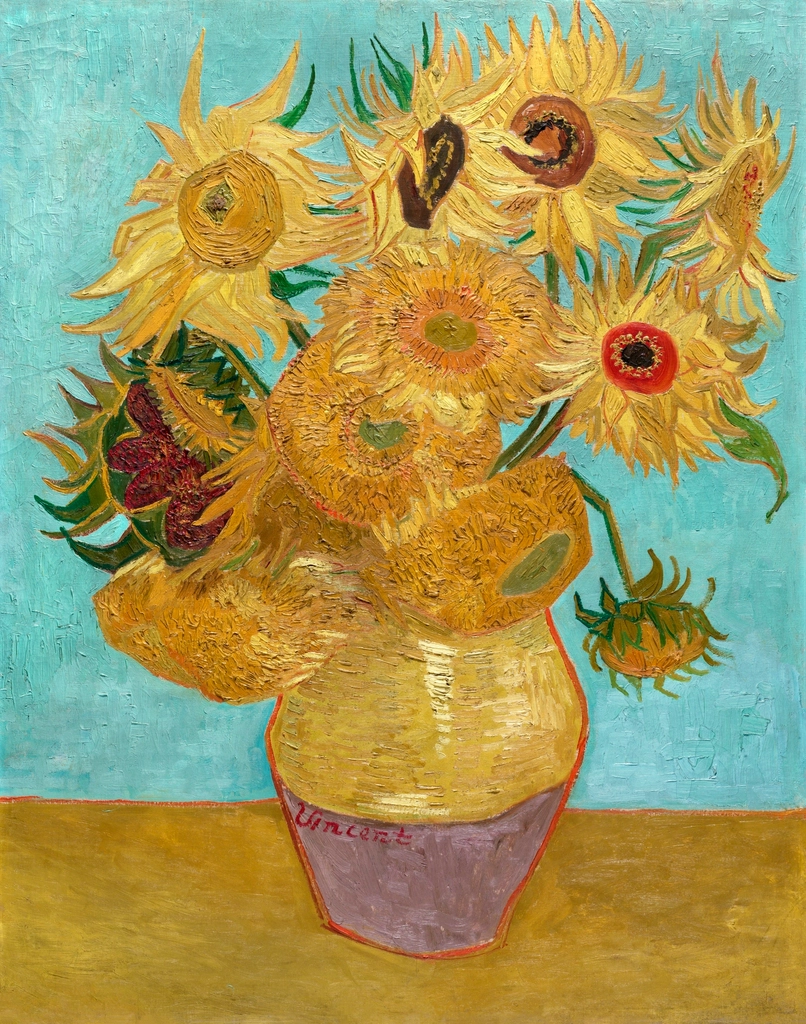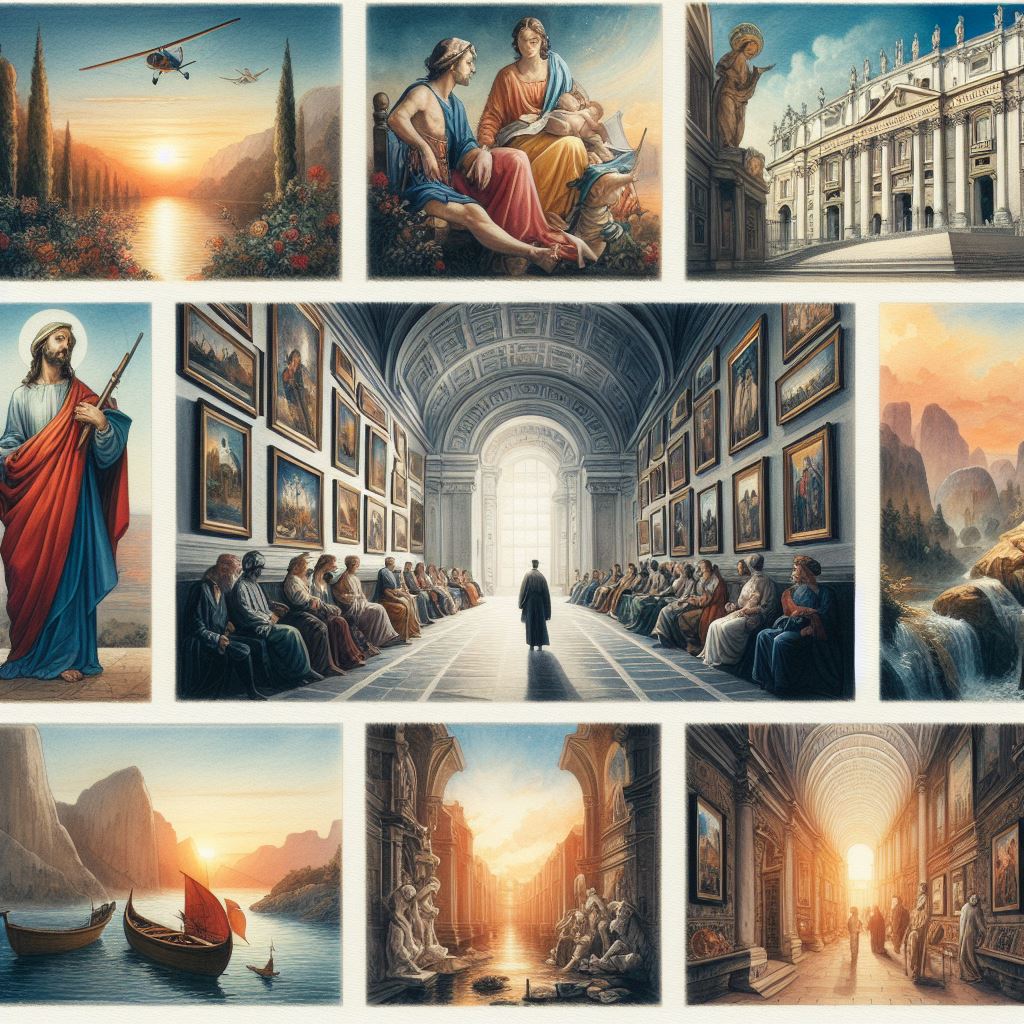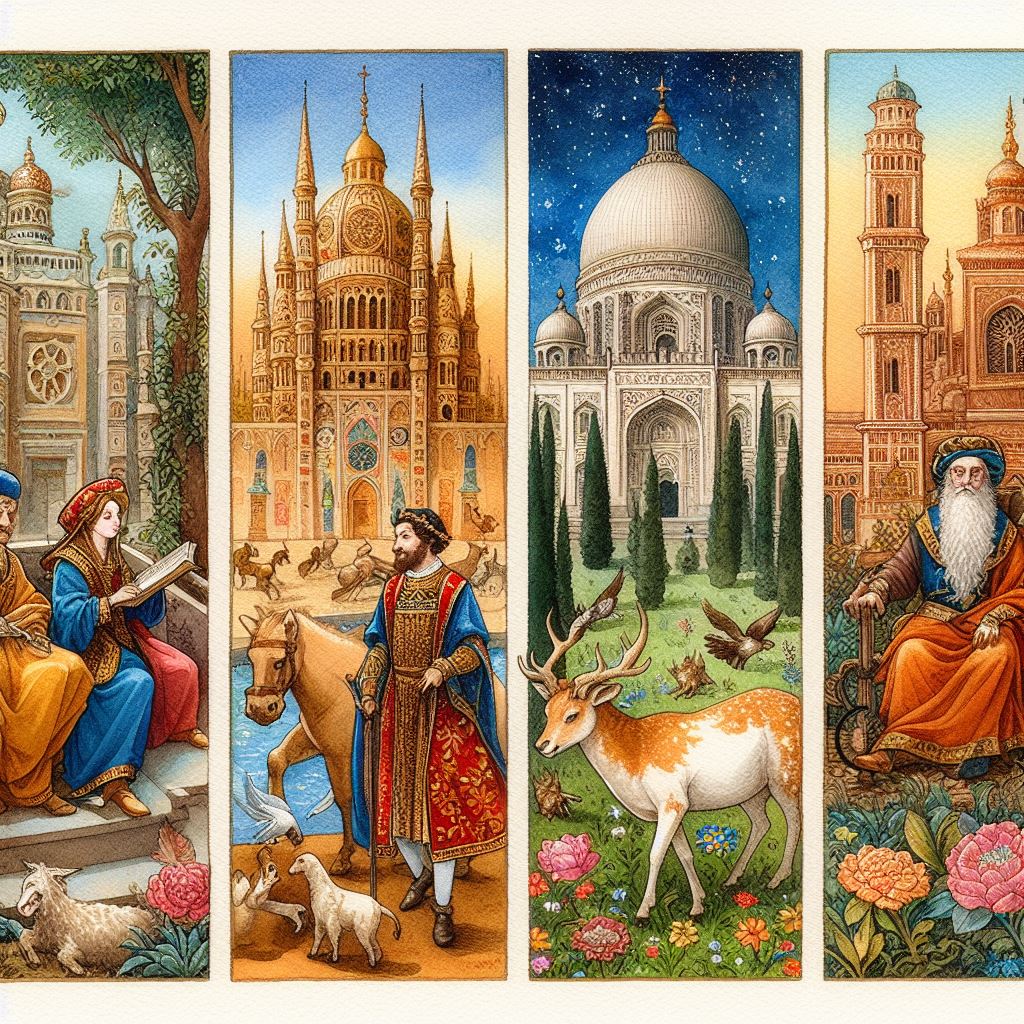
Have you ever been captivated by the intricate details of a Caravaggio fruit arrangement or the serene simplicity of a Morandi bottle composition? The allure of still life painting – with its quiet power to transform everyday objects into mesmerizing artworks – has captivated audiences for centuries. Whether you’re a seasoned artist seeking to refine your skills or an aspiring painter drawn to the genre’s charm, embarking on a journey into the world of still life promises rewarding challenges and artistic growth.
But where does one begin on this path to mastery? This comprehensive guide, designed specifically for aspiring and intermediate still life painters, will equip you with the knowledge and techniques needed to unlock your potential and breathe life into inanimate objects. Throughout this journey, we’ll delve into the core skills essential for mastering still life, from keen observation and meticulous composition to the captivating interplay of light and shadow.
Unveiling the Magic: Setting the Stage for Your Still Life
The first step in your still life adventure is choosing your subject. From the vibrant hues of fresh fruit to the weathered textures of everyday objects, the possibilities are endless. Whether you seek the drama of a single rose or the intricate complexity of a cluttered table, the key lies in selecting elements that spark your inspiration.
Once your subject is chosen, the magic begins with composition. Here, the principles of balance, rule of thirds, and leading lines become your guiding lights. Experiment with different arrangements, considering light sources and negative space to create a visually harmonious scene. Remember, a well-composed still life isn’t just about depicting objects; it’s about capturing a story, a mood, and a silent conversation within the canvas.
But composition alone isn’t enough. To truly bring your still life to life, we must delve into the world of light and shadow. Understanding how light falls and its impact on shadows is crucial. Explore the subtle nuances of natural light, diffused light, and chiaroscuro techniques to add depth and drama to your composition. Remember, light isn’t just illumination; it’s a storyteller, revealing the hidden facets of your chosen objects.
This is just the beginning of our journey into the captivating world of still life painting. In the next sections, we’ll delve deeper into the intricacies of observing form and texture, mastering value and tone, and harnessing the power of color and light interaction.
Embracing Your Tools – The Artist’s Arsenal
Now that we’ve ignited the spark of inspiration and set the stage for your still life, it’s time to equip yourself with the tools needed to translate vision onto canvas. But fear not, aspiring artist – the still life painter’s arsenal is surprisingly simple!
The Canvas of Expression:
- Choosing Your Surface: From the timeless texture of stretched canvas to the smooth surface of paper or board, the choice is yours. Consider the size and absorbency of your chosen surface about your subject and desired style.
- Color Foundations: Priming your canvas provides a clean base for paint adhesion and influences the final tones. Experiment with different primers for subtle variations in color and texture.
Painting the Light – Brushes and Pigments:
- Brushstrokes of Brilliance: Explore the diverse world of brushes – flat, filbert, round, and more – each designed to leave its unique mark on your canvas. Familiarize yourself with their strengths and weaknesses to achieve the desired effects.
- A Spectrum of Possibilities: Whether you prefer the vibrant intensity of oils, the versatility of acrylics, or the delicate transparency of watercolors, choose pigments that suit your style and comfort level. Remember, quality matters – invest in paints with good lightfastness and pigment load for lasting results.
Beyond the Basics:
- Easel for Stability: An adjustable easel provides proper support for your canvas, ensuring comfortable posture and reducing fatigue during long painting sessions.
- Palette Knife for Texture: Don’t underestimate the humble palette knife! Use it to mix paints, create impasto effects, and scrape away unwanted color, adding texture and dimension to your work.
Remember: Mastering these tools is not about blind mimicry, but about experimentation and discovery. Practice different techniques, explore various brushes and paints, and find the combination that best resonates with your artistic voice.
Unveiling the Secrets of Observation – From Gaze to Brushstroke
The true essence of capturing a still life lies not just in depicting objects, but in seeing them anew. This journey begins with observation, a skill honed through focused awareness and meticulous attention to detail.
Beyond the Surface:
- Active Seeing: Shift your gaze from passive observation to active analysis. Break down your subject into basic shapes, identify value relationships, and pay close attention to subtle shifts in light and shadow.
- Texture’s Tale: Observe not just the form of an object, but its texture as well. Is it smooth or rough? Reflective or matte? Understanding these nuances translates into brushstrokes that capture the object’s unique character.
Capturing the Essence:
- Value & Tone: Master the art of value scales, understanding how light affects the relative darkness or lightness of objects. This skill forms the foundation for creating depth and realism in your still life.
- Form & Perspective: Don’t be fooled by flatness! Remember, objects have three dimensions. Utilize perspective techniques to accurately render foreshortening and spatial relationships on your canvas.
Beyond the Visual:
- Engage Your Senses: Let your observation go beyond the visual. How does the object feel? What sound does it make when touched? Incorporating these sensory details into your painting adds depth and emotional resonance.
- Reference Photos: While not a substitute for direct observation, reference photos can supplement your studies, capturing fleeting moments or providing additional perspectives.
Remember: Observation is a lifelong journey. Train your eye, hone your focus, and don’t be afraid to experiment. As your observation skills develop, you’ll find your still-life paintings imbued with an authenticity and depth that transcends mere representation.
Harnessing the Power of Light and Shadow – Painting with Illumination
Light and shadow are the lifeblood of a still life painting. They define form, create depth, and imbue your artwork with atmosphere and emotion. Mastering their interaction is crucial for bringing your still life to life.
The Language of Light:
- Understanding Light Sources: Whether natural light streaming through a window or a focused lamp casting dramatic shadows, identify the main source of light and its impact on your composition.
- Observing Highlights & Midtones: Notice how light creates highlights on the areas facing the source, midtones in areas partially lit, and shadows in areas turned away. Capture these value gradations accurately.
- Exploring Cast Shadows: Shadows cast by your objects onto the background add depth and dimension. Observe their shape, intensity, and blurred edges for a realistic portrayal.
Shadow’s Symphony:
- Soft Light & Diffused Shadows: Soft, diffused light creates gentle shadows with no harsh edges. This effect fosters a serene and calm atmosphere in your still life.
- Dramatic Light & Defined Shadows: Harsh, directional light casts deep, well-defined shadows, adding drama and tension to your composition.
- Chiaroscuro Techniques: Explore the dramatic contrasts of light and shadow popularized by Caravaggio. This technique amplifies emotions and creates a sense of mystery.
Color & Light Intertwined:
- Warm & Cool Temperatures: Remember, light affects the way we perceive color. Warmer lights tend to make colors appear warmer, while cooler lights shift them towards cooler tones.
- Reflected Light & Color Harmony: Objects reflect the colors of their surroundings. Incorporate these subtle color shifts for a cohesive and realistic portrayal.
Beyond the Basics:
- Experimentation is Key: Don’t be afraid to experiment with different lighting setups and observe their effects. Try backlighting, side lighting, and even multiple light sources to see how they alter your composition.
- Reference Masters: Study the works of still-life masters known for their masterful use of light and shadow, such as Vermeer and Hopper. Analyze their techniques and draw inspiration for your own creations.
Remember: Light and shadow are powerful tools in your artistic arsenal. By understanding their principles and experimenting with different techniques, you can transform your still-life paintings from mere depictions to captivating stories of light and form.
Avoiding the Pitfalls – Common Mistakes and How to Overcoming Them
Even the most seasoned artists encounter hurdles on their creative path. Let’s explore some common pitfalls in still life painting and equip you with the knowledge to overcome them:
Overworking: The urge to refine every detail is tempting, but remember, sometimes less is more. Step back regularly to assess your painting as a whole and avoid losing its freshness.
Neglecting Value Relationships: Accurate values are the foundation of realism. Ensure smooth transitions between highlights, midtones, and shadows to create depth and avoid a flat appearance.
Ignoring Perspective: Remember, objects exist in three dimensions. Pay close attention to foreshortening and converging lines to render believable spatial relationships.
Forgetting Compositional Balance: While experimentation is encouraged, ensure your composition doesn’t feel lopsided or visually confusing. Utilize principles like the rule of thirds and leading lines for a harmonious arrangement.
Neglecting Self-Critique: Develop a critical eye. Step away from your work periodically, identify areas for improvement, and don’t be afraid to make adjustments.
Comparing Yourself to Others: Remember, artistic growth is a personal journey. Avoid comparison traps and focus on your own artistic development, celebrating your unique style and progress.
Top 10 Still Life Paintings: Inspiration for You!

| Title | Artist | Description | Gallery |
|---|---|---|---|
| Basket of Fruit | Caravaggio | A deceptively simple arrangement of fruit bursting with color and texture, showcasing Caravaggio’s mastery of light and shadow. | Pinacoteca Ambrosiana, Milan |
| Sunflowers | Vincent van Gogh | This vibrant masterpiece captures the energy and movement of sunflowers, reflecting van Gogh’s unique impasto technique and emotional intensity. | Van Gogh Museum, Amsterdam |
| Vase with Twelve Sunflowers | Vincent van Gogh | Another sunflower masterpiece, showcasing van Gogh’s experimentation with color and perspective. | Neue Pinakothek, Munich |
| Still Life with Skull | Paul Cézanne | A thought-provoking composition featuring a skull amidst everyday objects, challenging viewers to contemplate life and death. | Metropolitan Museum of Art, New York |
| Arrangement in Grey and Black No. 1 | James McNeill Whistler | This minimalist masterpiece demonstrates Whistler’s use of subtle tonal variations and delicate brushwork to create harmony and beauty. | Freer Gallery of Art, Washington D.C. |
| The Luncheon | Juan Gris | A cubist masterpiece deconstructing and reassembling a still life scene, challenging traditional perspectives. | Museum of Modern Art, New York |
| Apples and a Napkin | Paul Cézanne | A simple yet powerful composition showcasing Cézanne’s geometric approach to form and his interest in solidity and weight. | Art Institute of Chicago, Chicago |
| Still Life with Lemons, Oranges, and a Sugar Bowl | Édouard Manet | This vibrant composition utilizes bold colors and loose brushwork to capture the essence of the everyday objects. | Metropolitan Museum of Art, New York |
| Flowers in a Red Earthenware Jug | Henri Fantin-Latour | A delicate and lyrical portrayal of flowers, showcasing the artist’s meticulous attention to detail and soft-focus technique. | Metropolitan Museum of Art, New York |
| Arrangement in White, Black, and Red | Wassily Kandinsky | This abstract still life demonstrates Kandinsky’s move towards abstraction, exploring the power of color and form. | Solomon R. Guggenheim Museum, New York |
Conclusion: Your Still Life Awaits – Unleash Your Creativity!
This comprehensive guide has equipped you with the knowledge and techniques to embark on your still life painting adventure. Remember, the journey is just as important as the destination. Embrace experimentation, enjoy the process, and don’t be afraid to make mistakes – they are often stepping stones to discovery.
Here are some additional tips to inspire your journey:
- Take Online Courses or Workshops: Immerse yourself in the still life community by learning from experienced artists.
- Join a Painting Group: Share your work, receive feedback, and gain motivation from fellow artists.
- Visit Museums and Galleries: Surround yourself with the works of masters and draw inspiration from their techniques.
- Most Importantly, Have Fun! Remember, art is a form of self-expression. Enjoy the process, explore your creativity, and revel in the beauty of bringing everyday objects to life on canvas.


